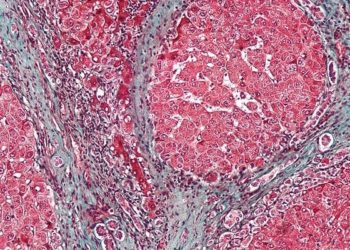Demographic trends associated with increased maternal & neonatal Hepatitis C cases over 10 years
1. A retrospective, cross-sectional study including all pregnancies in the United States between 2009 and 2019 found that the annual incidence of maternal & neonatal Hepatitis C (HCV) infection increased over the study period.
2. People from White or American Indian/Alaskan Native ethnic groups without a 4-year degree were at higher risk for HCV, while higher levels of education were protective.
Level of Evidence: 2 (Good)
Study Rundown: Hepatitis C is the most prevalent blood-borne infection in the United States and can pose serious health risks to pregnant persons as well as their offspring who are exposed through vertical transmission. Cases of HCV have been increasing in parallel with injection opioid use in recent years. It is known that low socioeconomic status & other social determinants of health are associated with increased risk of opioid use disorder and HCV, although specific and modifiable risk factors for these conditions are unknown. This study sought to identify individual and county-level factors associated with HCV infections amongst pregnant people. The primary outcome of this study was maternal HCV infection as recorded on the birth certificate. Demographic details about rurality, employment and access to healthcare were the variables of interest. Over 39 million live births occurred between 2009 and 2019; 138,343 (0.4%) mothers had HCV at the time of birth. The overall maternal HCV rate was 1.8 per 1000 in 2009, and increased to 5.1 per 1000 in 2019. Persons at risk for HCV were more likely to be White, American Indian/Alaskan Native (AI/AN), not have a 4-year postsecondary degree, qualify for Medicaid and be unmarried. The change in risk of HCV was most drastically increased amongst AI/AN individuals, from 7.2 to 16.6 per 1000 persons over the study period. The absolute number of HCV infections in the United States more than doubled between 2009 and 2019. This study by Patrick et al contributes valuable demographic information about who is at greatest risk for maternal and neonatal HCV infection, and provides grounds for systemic change to address these risk factors. The findings of this study are supported by a large sample size and considerable magnitude of the results. Some drawbacks include the retrospective nature of the study, which does not account for confounding variables, as well as the reliance on population-level databases which may be subject to reporting error. Nevertheless, the findings of this study can help individual clinicians and policymakers identify higher-risk mothers to intervene with appropriate HCV screening and patient education in order to reduce maternal and neonatal morbidity.
Click to read this article in JAMA Health Forum
Relevant Reading: Reported prevalence of maternal hepatitis C virus infection in the United States
In-Depth [retrospective cohort study]: Data were obtained from several population-level databases for the purposes of this study. All live births in the United States between 2009 and 2019 were included. Maternal HCV status and race were collected from birth records. Data analysis was conducted by using linear plots to estimate maternal HCV rate per 1000 births, and findings were summarized using descriptive statistics. A mixed effects logistic regression model was used to determine associations between demographic variables and the primary outcome. Leading risk factors for diagnosis with maternal HCV associated with a significant p-value (p<0.001) were as follows: White (79.9% vs. non-White 53.5%), AI/AN (2.9% vs 0.9%), no 4-year degree (93.2% vs 68.6%), Medicaid use (76.7% vs 42.6%), not married (73.7% vs 38.8%). Change in rates of maternal HCV per 1000 births from 2009 to 2019 in the following ethnic groups were as follows: AI/AN (7.2-6.6), White (2.4-7.9), Black (1.2-1.8). In a multivariable analysis, the adjusted odds ratio (OR) and 95% confidence intervals for maternal HCV infection amongst the highest-risk ethnic groups were as follows, compared to Black pregnant people: AI/AN (7.94, 7.58-8.31), White (7.37, 7.20-7.55). The adjusted OR for being unmarried compared to married was 2.8 (2.76-2.84), for not having a 4-year degree versus having one was 3.19 (3.11-3.28), and for Medicaid versus private insurance was 3.27 (3.21-3.33). Certain demographic factors were protective for maternal HCV risk: living in a rural-adjacent county (0.80, 0.75-0.87) and having a high density of obstetricians (0.71, 0.51-0.99).
Image: PD
©2021 2 Minute Medicine, Inc. All rights reserved. No works may be reproduced without expressed written consent from 2 Minute Medicine, Inc. Inquire about licensing here. No article should be construed as medical advice and is not intended as such by the authors or by 2 Minute Medicine, Inc.









